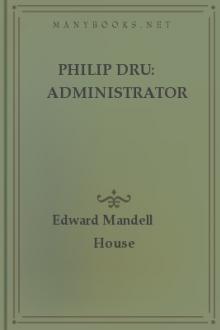My Spiritual Journey, Dalai Lama [best short books to read .TXT] 📗

- Author: Dalai Lama
Book online «My Spiritual Journey, Dalai Lama [best short books to read .TXT] 📗». Author Dalai Lama
I have always argued that in the end it is the Tibetan people who should decide on the future of Tibet. As Pandit Nehru, who was prime minister of India, declared before the Indian Parliament on December 7, 1950: “The final word on Tibet should be given by the Tibetan people and no one else.”
The cause of Tibet has a dimension and implication that go beyond the fate of six million Tibetans. It also concerns over thirteen million people living throughout the Himalayas, Mongolia, and the Kalmuk and Buriat Republics in Russia, as well as a growing number of our Chinese brothers and sisters who share our Buddhist culture, which is capable of contributing to the peace and harmony of the world.29
The Dalai Lama gave this speech at the European Parliament in Brussels in December 2008, after the mass uprisings that agitated Tibet starting on March 10 of China’s Olympic year, after the demonstrations that took place during the passing of the Olympic torch through the world’s capitals. Chinese repression was brutal, blind, and thorough. Rumor has it that there were so many arrests that the Chinese police ran out of handcuffs and had to tie prisoners up with cables.
On March 14, Zhang Qingli, secretary of the Communist Party for the autonomous region of Tibet, described the situation in Lhasa as a “fight to the death” against the Tibetan separatists. At a meeting with the heads of the People’s Armed Police, he expressed his pleasure that the March demonstrations allowed them to “test their ability to respond to an emergency in case of riots.”
The number of victims has not yet been verified, since there are still more than one thousand people missing. And information is filtered, since all communications are censored—to such an extent that even many months afterward, Tibetans in India have told us that they were not phoning their families out of fear of endangering them.
We now know that thousands of Tibetans—monks, nuns, laypeople, old people, and even children—were arrested. Over 200 were condemned, and at least 150 died, sometimes under torture and beatings. Some spoke of a “second Cultural Revolution” given the methods used by the Chinese regime following the closing of hundreds of monasteries throughout the country. Monastic compounds in the Lhasa valley were besieged by armored tanks for weeks, and laypeople were dissuaded from bringing in food or water. At least one monk is said to have died of hunger in Ramoche monastery. Once again people witnessed the pillaging of valuable religious objects, and meetings of “patriotic reeducation” were organized to force ordained people to deny the Dalai Lama in writing, under penalty of being accused of separatism and imprisoned.
Chinese propaganda accused the spiritual leader in exile of fomenting these revolts, calling him a “criminal,” a “traitor to the homeland,” and a “separatist,” while Zhang Qingli called him a “wolf with a man’s face but an animal’s heart.” To these insults, the Dalai Lama replied humorously that he would willingly submit to a blood test to determine whether he is man or animal. But more seriously, he deplored the serious attack on human rights when the Chinese authorities forced ordained people to insult him and, under threat, deny him.
The Dalai Lama received the first reports and images of atrocities committed by the Chinese authorities when he was with Samdhong Rinpoche. He remembers that their eyes filled with tears and that he felt overwhelmed by the suffering: “I was simply sad, profoundly sad,” he said.
In early January 2009, during a teaching in Sarnath, India, he declared that he had meditated on the prayer of the great Indian sage Shantideva, which speaks of an enemy as the best teacher, since he forces us to develop patience and deepen our tolerance and forgiveness. To a journalist who asked him if he had felt anger, the Dalai Lama replied that anger was foreign to him, since this emotion means that one wants to harm someone: “My faith helps me overcome this negative emotion and keep my equilibrium. Each of my Buddhist rituals is part of a process where I give and receive. I receive Chinese mistrust and I send compassion. I pray for the Chinese, for their leaders, and even for those who have blood on their hands.”30
The Dalai Lama’s analysis of the explosive situation is lucid. He notes that oppression and torture have not succeeded at politically “reeducating” the Tibetans. To offset the controversy aroused by the massive settlement of Han Chinese, the leaders of the Chinese Communist Party put into effect several programs to improve the quality of life, injecting billions of yuan into huge infrastructure projects. But in the eyes of the Tibetans, the most important thing is to recover their basic liberties along with their cultural identity and scorned spirituality.
In December 2008, at the European Parliament, the Dalai Lama reasserted the pertinence of his Middle Way policy, with its goal of ensuring general autonomy and guaranteeing Tibetans the right to settle questions of a cultural, religious, or environmental order themselves. There is





Comments (0)